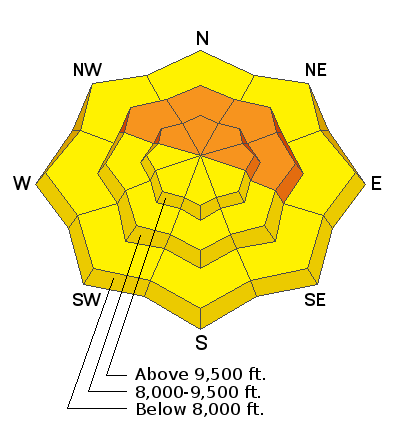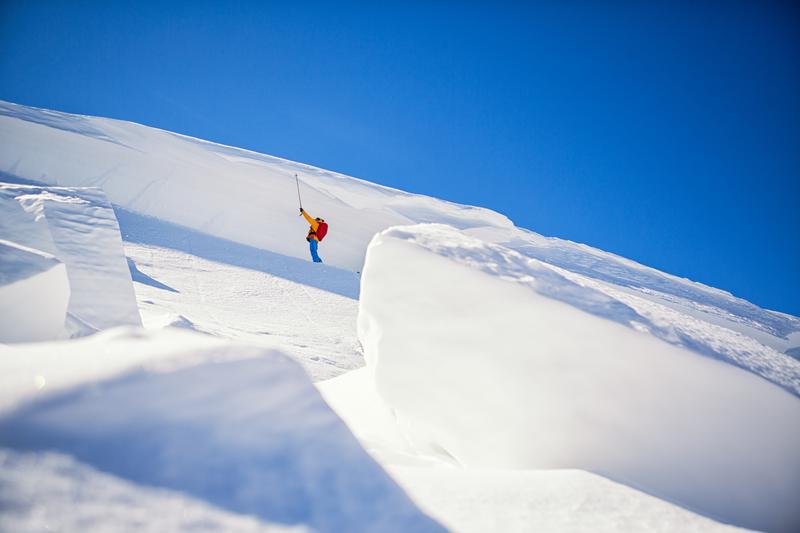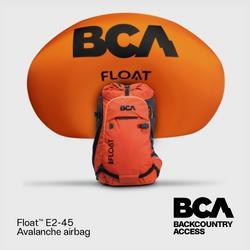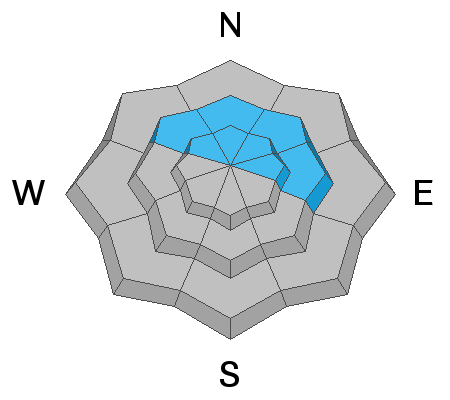Tutorial: Reading the forecast
This section is a summary of our avalanche forecast including an overall danger rating and a "Danger Rose" which displays avalanche danger by aspect and elevation. This section highlights the most important avalanche information for the day.
Danger Ratings include 5 levels.
LOW-MODERATE-CONSIDERABLE-HIGH-EXTREME
The "Danger Rose" is a general representation of how avalanche danger varies across terrain by aspect and elevation. In the example diagram, the danger is CONSIDERABLE for elevations between 8000' to 9500' and above 9500' and terrain that faces northwest, north and northeast. and east.

Low
Moderate
Considerable
High
Extreme





